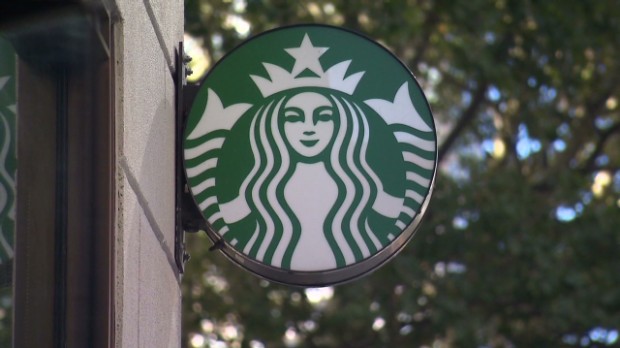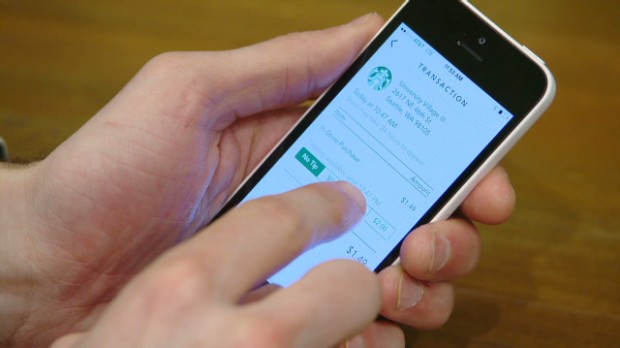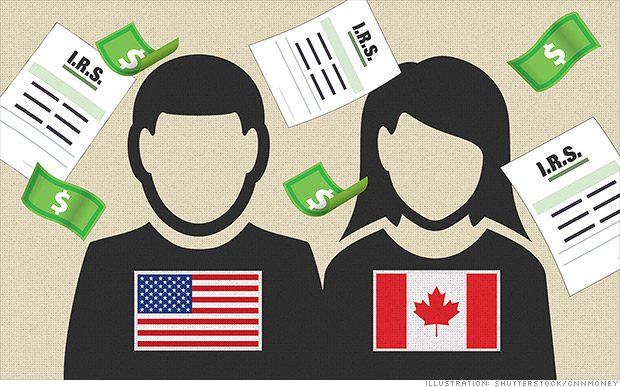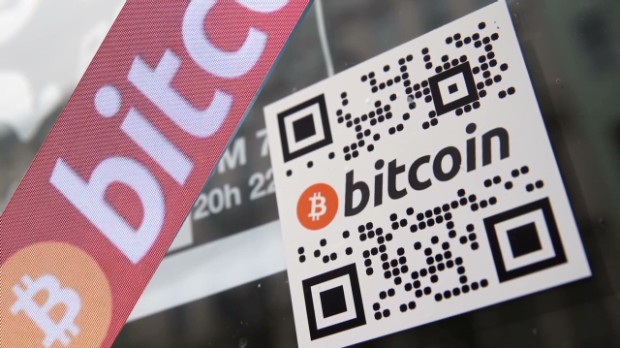Turnkey investing is a very hot topic in real estate circles and seems to only be getting hotter. On a daily basis in the BiggerPockets Forums there could be from half a dozen to two dozen conversations involving turnkey real estate. Those conversations may involve questions from new investors to advertisements of opportunities, but almost all of them get comments from investors who hate the concept. Some are uninformed opinions, and others are comments from experience, but all seem to point to two clear conclusions:
There is no definition of what turnkey real estate really means. The worst investment you can make is a cheap $40,000 turnkey property!
Read this article carefully, and pay close attention to the end. If you are thinking about buying turnkey investments, there are many great opportunities all around the country, but there are probably more out there that are not. Investors are often their own worst impediment to making turnkey portfolios work, and I give a few ideas at the end regarding which investors this concept works for best!
What is turnkey real estate?
To be very brief, turnkey real estate involves a model where an investor purchases a property -- usually for long-term buy and hold -- that another investor or company has purchased, renovated and put under in-house management with a tenant. That is my definition of a turnkey real estate investment. However, and unfortunately for investors everywhere, every week there are new turnkey companies popping up and creating their own spin on what it means to be "turnkey."
Some companies own all of the services, while some do not. Some offer a completed property with tenant, some do not. Some companies are fully capitalized, while others need to use an investor's money. Still other companies act as a real estate broker working off the MLS and then broker all of the after-purchase renovation and management services as well.
I am not here to tell you as an investor which one of these definitions is correct. I have been in this business for a number of years now and have seen all of the good (and most of the bad) and can honestly say that the word "turnkey" no longer has any true meaning. It is defined by the seller and marketed and sold to the buyer. As an investor, this is a major issue when you begin to investigate buying turnkey investments because different companies will have a different definition of the word "turnkey" to fit their model.
Related: What Are The Different Kinds of Turnkey Properties?
What I will tell you is that no matter the definition, there is one type of investment that I have seen fail every time when it comes to turnkey properties. In my opinion, the real blame for this failure falls on the constant marketing of turnkey investments and the lack of experience on the part of turnkey companies. Everyone markets the same thing and attaches the same emphasis on return and service without thought about how those two things are going to be delivered.
If you are looking to invest in real estate through a turnkey provider, exercise extreme caution when it comes to the marketing and pricing of properties. There are two absolutes when it comes to this business: turnkey investments sold at super cheap prices with super high returns are the riskiest investment you can make today. No matter how sincere a company or turnkey provider may be, it is impossible to maintain long-term relationships and high-level management and service without building in the revenue.
High quality renovations, high quality customer service and high quality long-term investments are not words that can be used by super cheap, low-end property turnkey sellers. They do not go hand in hand.
The worst turnkey investment
I started as an active real estate investor and had many opportunities to invest all over the country. My business was extremely successful, which gave me all the capital I needed to make lots of mistakes! I didn't know it at the time, but my biggest mistakes were the properties I was investing in for passive income. I was buying a lot of properties in Memphis, where I had spent part of my time growing up and where my family was still investing. The properties were turnkey for all intents and purposes even though that term wasn't really out there at the time. What attracted me most (looking back it is easy to see why I, like many new investors, was attracted) were the low prices and low barrier of entry into real estate. I was buying cheap properties with little work being done to them -- and what on paper were fantastic double-digit returns.
Before long, I had other investors around me asking what I was doing and what projects I was working on ... so I told them. These same investors were some of the first investors to push my family to start our turnkey company. Unfortunately, like I said, when we first started, we fell into the mind-set that super cheap properties with super high returns were great investments. We also believed that the best way to compete for investors was to offer cheap pricing. Keep the pricing low, and allow investors a low hurdle to their plans to build portfolios.
I speak from experience when I tell you that cheap properties -- defined by me as anything priced $50,000 and under -- make the worst turnkey investments. I have had them in my portfolio, and I have managed them in the past for other investors, and they are not profitable for anyone. We are currently managing over 2,700 turnkey investment properties, and here are our conclusions from reviewing factual data from managing those properties:
Two percent rent ratios are unicorns in the turnkey industry. They may pencil out as 2% properties, but you will pay in deferred maintenance what you should have paid for proper renovation and see your rent ratio cut to 1.5% or less. Turnkey providers who operate with these low price properties have two major issues to overcome and one, if not both, eventually force a change in model.
It is impossible to staff a turnkey company correctly with a focus on high-touch customer and tenant relations when selling low-cost properties. There is not enough room to build in the needed revenue to build and train a team properly. In the end the client and the tenant lose out, which both lead to problems for the company.
It is not realistic for an owner to plan to spend a vast majority of revenue on team and systems, in turn keeping their own income low. In my experience, many choose a different concept altogether called "stay small, keep it all." They choose to remain a small company while still marketing like a big company and simply keep the profit all to themselves. You can guess who loses out in this scenario!
Because renovations are often done at the lowest prices possible and some maintenance issues are deferred, those issues eventually have to be dealt with while a tenant is in place. At the same time, permits are a sticking point since permits can drive up pricing in some cases by 2% ($1,000 in permits for electric, water and gas on a $50,000 property). So often work is done without permits, which can lead to more issues in the future when deferred maintenance has to be addressed and no issues have ever been pulled for any work. At some point, the major work on a property is going to have to be permitted, and often that falls on the owner when they are dealing with deferred maintenance.
Tenants do not hang around properties with ongoing maintenance issues, and management companies do not survive when poorly renovated low-price properties eat up their time and resources. There simply is not enough money in the deal to operate on a high level and deliver on marketing promises to owners.
It is a vicious cycle, where the company does not make enough money to cover permits or to hire and train team members. At the same time, because of efforts to keep prices low, more work has to be done on an ongoing basis. Eventually a turnkey company owner realizes their time is worth more than they are earning, and they have to change their model.
Which investor should buy turnkey properties?
The answer is: any investor who values service and quality over hyped returns and wants a steady yield in return for a passive investment. Unfortunately, that does exclude a lot of investors who end up being sold turnkey investments anyway!
Related: The Lessons of 'Rent Ready' And Turnkey Investment Properties
Brand new investors who are struggling to come up with down payments on investment properties should avoid turnkey investing at all costs. These are the investors who are most likely going to get caught up in a cheap property offering. Remember that turnkey investments are categorized as passive for the most part. There are literally dozens of ways to get started investing in real estate in a passive manner without running the risk of buying cheap turnkey properties that cannot perform at a level you should expect.
What level of performance should you expect? Well, for starters, there should be no deferred maintenance. On an average 1,500 sq. ft. property, the renovation costs could easily reach $25,000 when all systems, roof, flooring, paint, locks, doors, hardware, lighting, permits, fence, aesthetics and trees planted near water and sewage lines are addressed.
On the management side, an investor should expect a property management company to be owned and operated by the turnkey company and to be 100% responsible for the performance of that property. The property management company should be staffed at a level where the tenants and investors both can get quick service and fast replies. In my opinion, customer service fits right under the property management column since most of the communication for an investor occurs after they purchase a property is going to involve property management.
Customer service, in my opinion, does not involve having an answering service take in coming calls so you can return them. Customer service means going above and beyond so an investor buying from 1,500 miles away feels they have competent, safe and secure investments. It means reaching out when there are issues and being proactive on move-outs, as well as maintenance and rental issues. Whether a company is any good at providing service is another story! They have to at least have the personnel and systems in place before they can do it!
Passive investing, especially in a turnkey investment, should be all about the highest level of service, consistent returns and a no-hassle experience as much as possible. None of those things occurred when I was buying the super cheap properties from far away. None of those things were important when we first stated buying and offering cheap properties. And none of those things are present today when investors turn to super-cheap turnkey investments. Turnkey should be held to a very high standard by investors if they want to have a good and profitable experience.
Are you a turnkey investor? What would you add to my assessment?
This article originally appeared on Bigger Pockets and is Copyright 2014 BiggerPockets,
The smart way to get more income in retirement
Getting a part-time job is one way to increase your income in retirement, but it isn't the smart way. In a brand-new free report, our retirement experts explain a straightforward strategy that people are already using to secure an even more comfortable retirement. The method is so simple you'll be shocked you didn't think of it yourself. To access this free report instantly, simply click here now.
 Starbucks paying for college? Really. NEW YORK (CNNMoney) Will a barista with a college degree want to remain a barista?
Starbucks paying for college? Really. NEW YORK (CNNMoney) Will a barista with a college degree want to remain a barista?  Text, call or email for your latte
Text, call or email for your latte 


 ) were up on Thursday morning after the company reported increased earnings that beat estimates.
) were up on Thursday morning after the company reported increased earnings that beat estimates. Jin Lee/APAutoNation CEO Mike Jackson If you follow the financial media regularly, you will find daily predictions about the direction of the markets. Breakout, a daily blog on Yahoo Finance's website, is typical of what passes for financial information. On Sept. 6, Breakout's Jeff Macke featured Mike Jackson, the CEO of AutoNation (AN), as his guest. Jackson opined that the economy "has moved into a self-sustaining recovery." He may or may not be correct in that assessment, but relying on his views or the views of others claiming predictive powers is more akin to gambling than investing. Macke's program is no worse than what is dispensed by many of his colleagues in the media. The format is familiar to all of us: Intelligent people in positions of power and influence make rational-sounding statements about the economy, the direction of the market or the merit of a particular stock or fund. What's missing is any data indicating that their views are worthy of consideration, based on a history of accurate past predictions or demonstration of predictive skill (as contrasted with luck). There is ample evidence to the contrary. In a paper published in July 2010, three finance professors from Duke University and Ohio State University published the results of an extensive survey they performed. Each quarter from March 2001 to February 2010, they surveyed "top U.S. financial executives." They asked them to predict one- and 10-year stock market returns and also for their predictions of best- and worst-case outcomes. The data they gathered aggregated 11,600 S&P 500 forecasts. You would think the accumulated expertise of these executives would permit them to make fairly accurate predictions about a commonly used index such as the S&P 500 (^GSPC). The opposite was true. The authors of the study found no correlation between the estimates of these top financial executives and the actual value of the index. In fact, the correlation was negative. When they predicted the index would decline, it was modestly more likely it would go up. Nobel Laureate Daniel Kahneman commented on this study in his book, "Thinking, Fast and Slow", noting, "These findings are not surprising. The truly bad news is that the CFOs did not appear to know that their forecasts were worthless." Since the data is overwhelming that predictions are basically "worthless," why do investors continue to pay attention to them, often to their financial detriment? Kahneman provides this answer: "Facts that challenge such basic assumptions -- and thereby threaten people's livelihood and self-esteem -- are simply not absorbed. The mind does not digest them." If investors accepted the fact that the predictive views of financial "experts" were "worthless," the ramifications would be profound. Much of the financial media would cease to exist. Brokers would go out of business because clients would view their advice through the prism provided by sound academic studies and the views of scholars such as Kahneman. This result -- threatening the livelihood and self-esteem of powerful segments of our society -- is simply not going to happen. While much of the financial media and many brokers are driven by this secret agenda to maintain their livelihoods, you should ignore their musings and base your investing decisions on reliable, peer-reviewed data. Dan Solin is the director of investor advocacy for the BAM Alliance and a wealth adviser with Buckingham Asset Management. He is a New York Times best-selling author of the Smartest series of books. His next book, The Smartest Sales Book You'll Ever Read, will be published March 3, 2014.
Jin Lee/APAutoNation CEO Mike Jackson If you follow the financial media regularly, you will find daily predictions about the direction of the markets. Breakout, a daily blog on Yahoo Finance's website, is typical of what passes for financial information. On Sept. 6, Breakout's Jeff Macke featured Mike Jackson, the CEO of AutoNation (AN), as his guest. Jackson opined that the economy "has moved into a self-sustaining recovery." He may or may not be correct in that assessment, but relying on his views or the views of others claiming predictive powers is more akin to gambling than investing. Macke's program is no worse than what is dispensed by many of his colleagues in the media. The format is familiar to all of us: Intelligent people in positions of power and influence make rational-sounding statements about the economy, the direction of the market or the merit of a particular stock or fund. What's missing is any data indicating that their views are worthy of consideration, based on a history of accurate past predictions or demonstration of predictive skill (as contrasted with luck). There is ample evidence to the contrary. In a paper published in July 2010, three finance professors from Duke University and Ohio State University published the results of an extensive survey they performed. Each quarter from March 2001 to February 2010, they surveyed "top U.S. financial executives." They asked them to predict one- and 10-year stock market returns and also for their predictions of best- and worst-case outcomes. The data they gathered aggregated 11,600 S&P 500 forecasts. You would think the accumulated expertise of these executives would permit them to make fairly accurate predictions about a commonly used index such as the S&P 500 (^GSPC). The opposite was true. The authors of the study found no correlation between the estimates of these top financial executives and the actual value of the index. In fact, the correlation was negative. When they predicted the index would decline, it was modestly more likely it would go up. Nobel Laureate Daniel Kahneman commented on this study in his book, "Thinking, Fast and Slow", noting, "These findings are not surprising. The truly bad news is that the CFOs did not appear to know that their forecasts were worthless." Since the data is overwhelming that predictions are basically "worthless," why do investors continue to pay attention to them, often to their financial detriment? Kahneman provides this answer: "Facts that challenge such basic assumptions -- and thereby threaten people's livelihood and self-esteem -- are simply not absorbed. The mind does not digest them." If investors accepted the fact that the predictive views of financial "experts" were "worthless," the ramifications would be profound. Much of the financial media would cease to exist. Brokers would go out of business because clients would view their advice through the prism provided by sound academic studies and the views of scholars such as Kahneman. This result -- threatening the livelihood and self-esteem of powerful segments of our society -- is simply not going to happen. While much of the financial media and many brokers are driven by this secret agenda to maintain their livelihoods, you should ignore their musings and base your investing decisions on reliable, peer-reviewed data. Dan Solin is the director of investor advocacy for the BAM Alliance and a wealth adviser with Buckingham Asset Management. He is a New York Times best-selling author of the Smartest series of books. His next book, The Smartest Sales Book You'll Ever Read, will be published March 3, 2014. HONG KONG (CNNMoney) Think your taxes are a pain? Imagine if you had piles of U.S. tax forms to fill every year, and you weren't even an American.
HONG KONG (CNNMoney) Think your taxes are a pain? Imagine if you had piles of U.S. tax forms to fill every year, and you weren't even an American.  Millard is thinking about giving up his U.S. passport.
Millard is thinking about giving up his U.S. passport.  Related WAG #PreMarket Primer: Monday, December 22: White House Struggles To Respond To Sony Hack Earnings Expectations For The Week Of December 22 Making Money With Charles Payne: 10/22/14 (Fox Business) Related PRLS Benzinga's M&A Chatter for Monday December 22, 2014 UPDATE: Peerless Systems Announces Will Be Purchased by Mobius Acquisition for $7/Share in Cash
Related WAG #PreMarket Primer: Monday, December 22: White House Struggles To Respond To Sony Hack Earnings Expectations For The Week Of December 22 Making Money With Charles Payne: 10/22/14 (Fox Business) Related PRLS Benzinga's M&A Chatter for Monday December 22, 2014 UPDATE: Peerless Systems Announces Will Be Purchased by Mobius Acquisition for $7/Share in Cash  Columbia Pictures
Columbia Pictures  PSDV data by YCharts
PSDV data by YCharts 
 AP
AP  Daniel Acker/Bloomberg via Getty Images WASHINGTON -- U.S. wholesale inventories rose more that expected in September but the government revised downward its initial estimates for growth in stocks during August, which suggests little impact on current views of economic growth in the third quarter. The Commerce Department said Wednesday wholesale inventories increased 0.3 percent during the month after a 0.6 percent gain in August. Economists polled by Reuters had expected a 0.2 percent increase in September. Inventories are a key component of gross domestic product changes. The component that goes into the calculation of GDP -- wholesale stocks excluding autos -- increased 0.1 percent. Sales at wholesalers rose 0.2 percent in September, more than the 0.1 percent increase predicted by economists. At September's sales pace it would take 1.19 months to clear shelves, unchanged from August. Sales had fallen 0.8 percent in August. A slowdown in the pace of restocking by businesses held back stronger economic growth in the third quarter, though gross domestic product still expanded a robust 3.5 percent during the three-month period.
Daniel Acker/Bloomberg via Getty Images WASHINGTON -- U.S. wholesale inventories rose more that expected in September but the government revised downward its initial estimates for growth in stocks during August, which suggests little impact on current views of economic growth in the third quarter. The Commerce Department said Wednesday wholesale inventories increased 0.3 percent during the month after a 0.6 percent gain in August. Economists polled by Reuters had expected a 0.2 percent increase in September. Inventories are a key component of gross domestic product changes. The component that goes into the calculation of GDP -- wholesale stocks excluding autos -- increased 0.1 percent. Sales at wholesalers rose 0.2 percent in September, more than the 0.1 percent increase predicted by economists. At September's sales pace it would take 1.19 months to clear shelves, unchanged from August. Sales had fallen 0.8 percent in August. A slowdown in the pace of restocking by businesses held back stronger economic growth in the third quarter, though gross domestic product still expanded a robust 3.5 percent during the three-month period. Daniel Acker/Bloomberg via Getty Images NEW YORK -- The average price of a gallon of gasoline in the United States dropped 13 cents in the past two weeks to its cheapest in nearly four years, according to the latest Lundberg survey released Sunday. Gasoline prices fell to $2.94 a gallon of regular grade gasoline, its lowest level since December 2010, according to the survey conducted on Nov. 7. The decline in price is largely driven by lower crude oil prices, which declined further during the period, said Trilby Lundberg, publisher of the survey. "Crude oil dominates what gasoline prices are and what gasoline prices will do," Lundberg said, noting that the direction of crude oil prices in the coming weeks and months will dictate whether gasoline prices will continue to fall further or begin trending upward. "If they don't decline further, then this will be the end or nearly the end of this very steep price drop," she said. The gasoline price is down about 28 cents from a year ago, and has dropped 78 cents from a 2014 peak of $3.72 in May. The highest price within the survey area was recorded in San Francisco at $3.27 a gallon, with the lowest in Memphis at $2.65.
Daniel Acker/Bloomberg via Getty Images NEW YORK -- The average price of a gallon of gasoline in the United States dropped 13 cents in the past two weeks to its cheapest in nearly four years, according to the latest Lundberg survey released Sunday. Gasoline prices fell to $2.94 a gallon of regular grade gasoline, its lowest level since December 2010, according to the survey conducted on Nov. 7. The decline in price is largely driven by lower crude oil prices, which declined further during the period, said Trilby Lundberg, publisher of the survey. "Crude oil dominates what gasoline prices are and what gasoline prices will do," Lundberg said, noting that the direction of crude oil prices in the coming weeks and months will dictate whether gasoline prices will continue to fall further or begin trending upward. "If they don't decline further, then this will be the end or nearly the end of this very steep price drop," she said. The gasoline price is down about 28 cents from a year ago, and has dropped 78 cents from a 2014 peak of $3.72 in May. The highest price within the survey area was recorded in San Francisco at $3.27 a gallon, with the lowest in Memphis at $2.65.

 Related BABA Jack Ma: SEC 'Misunderstood' Alibaba's IPO Alibaba Shares Break $100 On Apple Partnership Rumors Amazon Earnings: What to Expect (Fox Business)
Related BABA Jack Ma: SEC 'Misunderstood' Alibaba's IPO Alibaba Shares Break $100 On Apple Partnership Rumors Amazon Earnings: What to Expect (Fox Business) 
 5 bad signs for Bitcoin
5 bad signs for Bitcoin 
